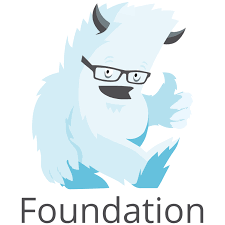
Research Show Workers Will Be Unhappy in 2024
Blog Article
Foundation and Bootstrap are two terms that have become very familiar to Akumina clients since 2022. Both are popular front-end frameworks for web development, and they share many similarities, as they are both designed to streamline the process of building responsive and visually appealing websites.
When Akumina first started offering the Foundational Site Accelerator, it was a collection of pages, templates, and widgets that were meant to be an "off-the-shelf" intranet site built on the Foundation framework. It could launched as-is, or be used as a starting point for more complex business requirements.
In 2022, Akumina released an updated Foundational Site Accelerator. Dubbed "The Hive", this version was built using the Bootstrap framework. This new collection of pages and widgets had some new site functionality that were developed using lessons learned from building intranet for hundreds of Akumina clients.
However, there are some key differences between the two, and some of the reasons that Akumina decided to switch to Bootstrap:
Bootstrap: Bootstrap was created by Twitter, now known as X, and initially released in 2011. It has since become an open-source project with a large community of contributors. Bootstrap is often referred to as "Twitter Bootstrap" due to its origins.
Foundation: Foundation was developed by Zurb and released in 2011 as well. It is also an open-source project with an active community of developers.
 Bootstrap: Bootstrap is known for its opinionated design and default styling, which many developers find aesthetically pleasing. It provides a more prescriptive approach to design, making it easy to create consistent-looking websites. With many Akumina clients having a design requirement to match brand standards, it was decided that Bootstrap is the best way to give developers a "pixel-perfect" development platform.
Bootstrap: Bootstrap is known for its opinionated design and default styling, which many developers find aesthetically pleasing. It provides a more prescriptive approach to design, making it easy to create consistent-looking websites. With many Akumina clients having a design requirement to match brand standards, it was decided that Bootstrap is the best way to give developers a "pixel-perfect" development platform.
Foundation: Foundation takes a more flexible and modular approach, offering a set of tools and components that you can mix and match to create your own unique designs. It gives you more control over the visual aspects of your website.
Bootstrap: Bootstrap uses a 12-column grid system by default, which is easy to work with and widely used. It provides pre-defined grid classes to create responsive layouts. It was determined that the default grid system provided by Bootstrap was perfect for our clients, without adding in the complexity of unneccesary configurations.
Foundation: Foundation also uses a 12-column grid system but allows you to customize the number of columns. It offers more flexibility in terms of grid configuration and includes advanced features like block grids.
Bootstrap: Bootstrap provides a customization tool that allows you to select which components and styles you want to include in your project. This helps keep the file size minimal and tailored to your specific needs. With site performance being a key requirement of Akumina clients, the minimal payload of the Bootstrap framework was considered to be ideal.
Foundation: Foundation's modular approach allows you to include only the components you need, giving you greater control over the size and scope of your project.
 Bootstrap: Bootstrap includes various JavaScript components, such as modals, carousels, tooltips, and more, which are easy to use out of the box.
Bootstrap: Bootstrap includes various JavaScript components, such as modals, carousels, tooltips, and more, which are easy to use out of the box.
Foundation: Foundation also offers a set of JavaScript components, but it may require more configuration and customization compared to Bootstrap's components.
Bootstrap: Bootstrap's opinionated design and straightforward documentation make it relatively easy for beginners to get started quickly. Becaue Bootstrap is one of the most widely used front-end frameworks, Akumina felt it was best to tap into the network of developers to better enable our clients and partners.
Foundation: Foundation's flexibility and modularity can be both an advantage and a challenge. It may require a deeper understanding of CSS and HTML to leverage its capabilities fully.
Both Bootstrap and Foundation have active communities, extensive documentation, and third-party themes and extensions available, making it easier to find resources and support for your projects.
Ultimately, the choice of shifting to Bootstrap was to help our clients deliver the best site experience possible to employees. While there is new functionality available on the native Bootstrap Hive offering, it is possible to pull these features into a Foundation-based site.
If you want to learn more about how to get to a Boostrap-based site, or to bring Hive functionality into your current site, reach out to Akumina Customer Success.